Nothing starts a lively conversation among Labrador fans quite so quickly as the topic of silver Labs! Silver Labradors are basically chocolate Labs with a twist. They have a gene that dilutes that rich chocolate fur and turns it into a pale, silvery grey color.

Where that gene came from, how it got into Labs and whether it should be there at all, is a debate that has been raging for decades. So I’m going to dig into the evidence and find out what’s going on with this controversial Lab!
- What are silver Labs really like?
- Introducing the dilute gene
- The great silver Lab controversy!
- Pros, cons, and buying tips
Whether you think the Silver Lab is a disaster or a delight, you should find plenty here to interest you and you’re welcome to add your thoughts to the many comments below. Let’s start with the facts and then move on to the debate.

Introducing The Dilute Gene
There are only three different colors of Labrador Retriever recognized by the American Kennel Club. Those colors are:
Missing from the list you’ll notice are cream, white, fox-red, champagne, charcoal and silver. The first three are simply variations in the coat color of the yellow Labrador, and are registered with the AKC as yellow Labs.

The last three, are a bit different. They are dilutions of the three major colors. Champagne is a dilution of yellow. Charcoal is a dilution of black, and of course silver is a dilution of chocolate.
The coat color dilution gene is common in many animals including dogs, cats and rabbits. And the AKC recognizes several dog breeds in diluted colors. The Weimaraner is one example. And the Chesapeake Bay Retriever is another.

Labradors are not included among those breeds where the dilution gene is accepted. However the AKC will allow silver Labs to be registered, provided they are registered as chocolate.
This is a source of major annoyance to many Labrador enthusiasts. Many of whom think that silver labs should not ever be registered as pedigree dogs. And who believe that admitting these dogs to the breed register has allowed the spread and proliferation of silver Labs to take place across the USA
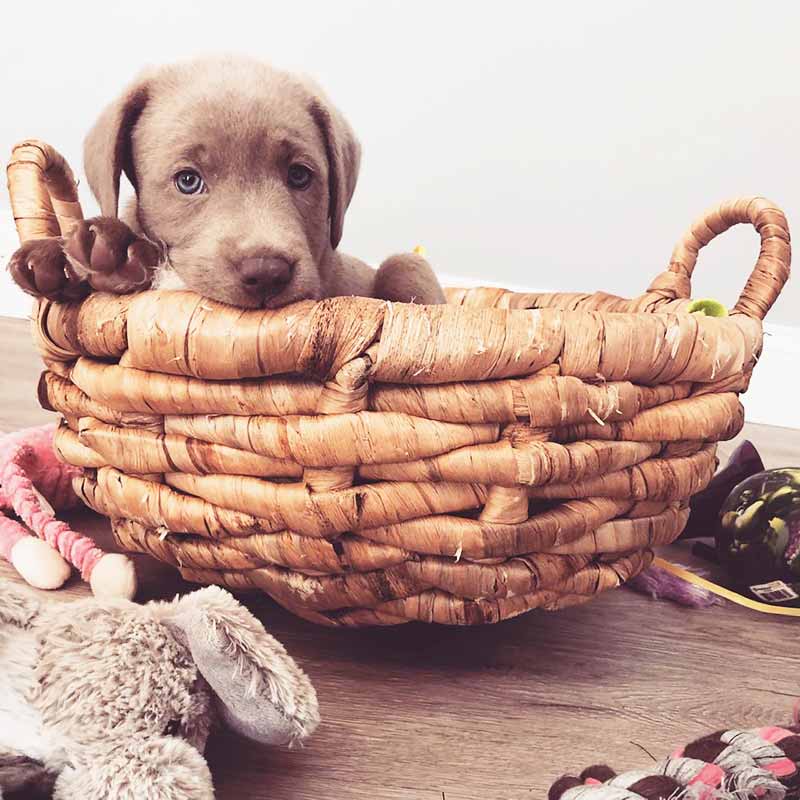
There are many opinions on the rights and wrongs of breeding and registering Silver Labs, and we’ll be taking a closer look at them, but those are the bare facts as they stand at the moment. First let’s dig into the genetics, and find out how we get silver fur on a chocolate Lab.
How The Dilute Gene Works
You can read about the way B and E genes control the underlying coat color of the three recognized Labs in this article on Labrador color inheritance.
The gene that dilutes chocolate fur to silver is known as the D gene. And like many genes, the D gene acts as a type of switch. Every dog with dilution genes inherits a pair of them. One from each parent. And there are two types of D gene. Big D and little d

So there are three possible combinations that your Labrador can inherit
- DD
- Dd
- dd
Only a chocolate dog with two little ds can be silver. That’s because the big D gene is dominant. It over-rides, or switches off, the little d gene whenever they are paired together. So if your dog inherits just one little d gene, the color dilution will not take place and your dog will have a normal full strength chocolate coat. They will however, pass on that little d gene to around half of any puppies they may have.
In some breeds of dog, all individuals have two little d genes. Weimaraners are one example. And for many decades there were no recorded instances of the dilute coat in Labrador Retrievers.

Which raises a number of questions, including:
- When did the dilute gene first appear in Labradors?
- How did the dilute gene get into the Labrador breed?
- Should silver Labs be registered as pedigree dogs?
We’re going to go into those in some detail in a moment. But first let’s look at what you and your family are getting into, if you decide to buy a silver Lab puppy.
What Are Silver Labradors Really Like?
Silver Labs make great family pets. They need plenty of exercise and are ideally suited to active, outdoor life.
All Labradors can be very bouncy and excitable when young so a silver Lab puppy isn’t always a great match for toddlers or those unsteady on their feet. But an older, calmer, rescue Lab can make a perfect companion for younger children.
Labradors are generally very friendly and sociable dogs that love company. So your silver Lab is likely to be happier in a family where there are people at home for part or most of the day.
Like all Labs they shed, heavily at times, so if perfect carpets and soft furnishings are your dream, then they might not be the best pet for you.
How big do silver Labs get?
Because they are essentially a variation on the chocolate Lab, you can expect the same size range in your dog once they are fully grown. The breed standard height for a Labrador is up to 24 and a half inches for a male, and an inch shorter for a female. Individuals can vary a couple of inches or more either side of that.
When it comes to body weight, the variations can be even greater and will depend on which of two groups (American or English) a silver Lab falls into. Male Labs often reach about 70lbs in weight. Females about 10lb lighter. But there can be as much as 20lbs difference either side of that average.
American Labs bred for hunting and retrieving are slimmer, taller and often lighter than the chunkier English type that you see in the show ring
Are silver Labs rare?
As a relatively new color variation, silver Labs are rare in some countries. Partly because registration of silver puppies is not widely permitted.
Some national kennel clubs and breed clubs have clarified their views on silver Labradors by issuing statements about them. You can find some of these statements in the links below:
Even in the USA, silver is still a more unusual color and silver puppies can be harder to find than black, yellow or brown. That can have an impact on the price of your puppy.
How much do silver Labs cost?
Prices vary greatly but as a rough guide you can expect to pay upwards of $1000 for a silver Labrador puppy. When you are considering whether or not you can afford a silver puppy remember that medical insurance will likely be your greatest outlay over the dog’s lifetime. Not the once only purchase price.
You may have heard that silver Labs are over-priced. In fact objections to so-called overpricing are common in dog breeding and not confined to the silver Lab. The same accusations are often aimed at Labradoodle breeders and Cockapoo breeders.
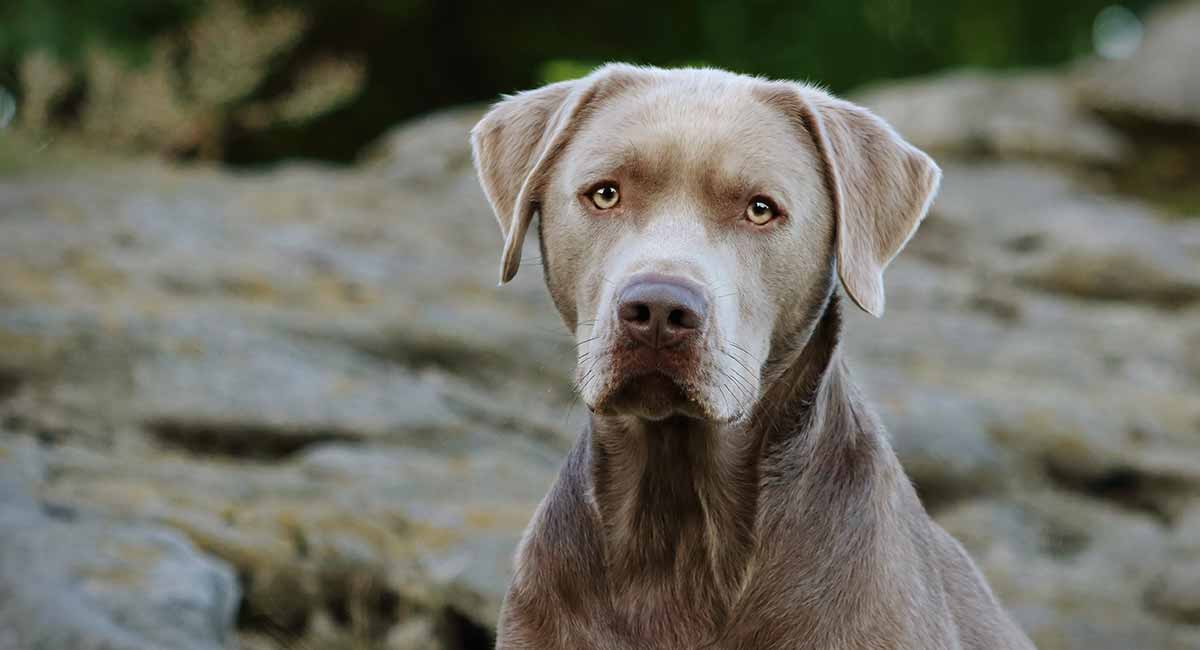
Many purebred dog breeders feel it is outrageous to charge large sums of money for dogs that are crossbred. And some view the silver Labrador Retriever as a cross breed.
Are silver Labs healthy?
Silver Labs suffer from the same health issues as other purebred Labs. Including a predisposition to joint problems and to over-eating!
Two studies record Labrador lifespan at between 11 and 12 years of age and Labs also have a higher rate of cancer (at 31% of all deaths) than some other breed
On balance, Labs are a fairly healthy and well constructed breed, free from the disabilities that plague some other purebred dogs. But there is a potential health issue associated with the coat color dilution gene which you need to be aware of.
Color dilution alopecia
The color dilution gene, that dd which gives us the pale silvery coat, is sometimes associated with coat problems. Specifically, it may be linked to a kind of hair loss.
The problem is known as “color dilution alopecia” and is more common in dogs that have the color dilution gene, dogs like Weimaraners, and now, silver Labradors.
It isn’t usually a life threatening condition, but it also isn’t curable. It can lead to progressive hair loss in young dogs and potentially recurrent infection in the hair follicles.
Thankfully, coat dilution does not always lead to skin problems. Not all dogs with the dd gene carry the faulty alopecia version and most silvers are, in fact, free from alopecia. In most respects therefore, silver Lab health is much the same as that of any purebred Labrador.
Ok, so we’ve covered what you can expect from a silver lab, and how they are both different from, and the same as, other Labs. Now it’s time to address the debate!
The Great Silver Labrador Controversy
Each time we discuss this topic on the Labrador Site’s Facebook page there is some anger expressed by those that are opposed to the very existence of silver Labradors. Though I do think that this is getting less over time, and that these dogs are becoming more widely accepted.
Reports of silver Labradors seem to have first appeared in the United States in the 1950s. Culo Silver Labs was one of the early kennels to produce this new silver color. You may be interested to read this report of an interview with the owner Dean Crist giving his account of the history of the silver Lab.
Much of the debate is focused on how the dilute gene that causes silver fur, got into our Labs in the first place. There are actually only a few options that can explain the appearance of a new gene in a purebred dog. We’ll look at each of these in turn
- mixed breeding
- spontaneous mutation
- hidden genes
The first explanation is that at some point, an outcross occurred, between a Labrador and a breed of dog that carries the dilute gene. A Weimaraner for example.
#1 Mixed breeding
The argument that silver Labs are not purebred, is quite a popular one. Many people believe that the first silver Labs were crossbreeds.
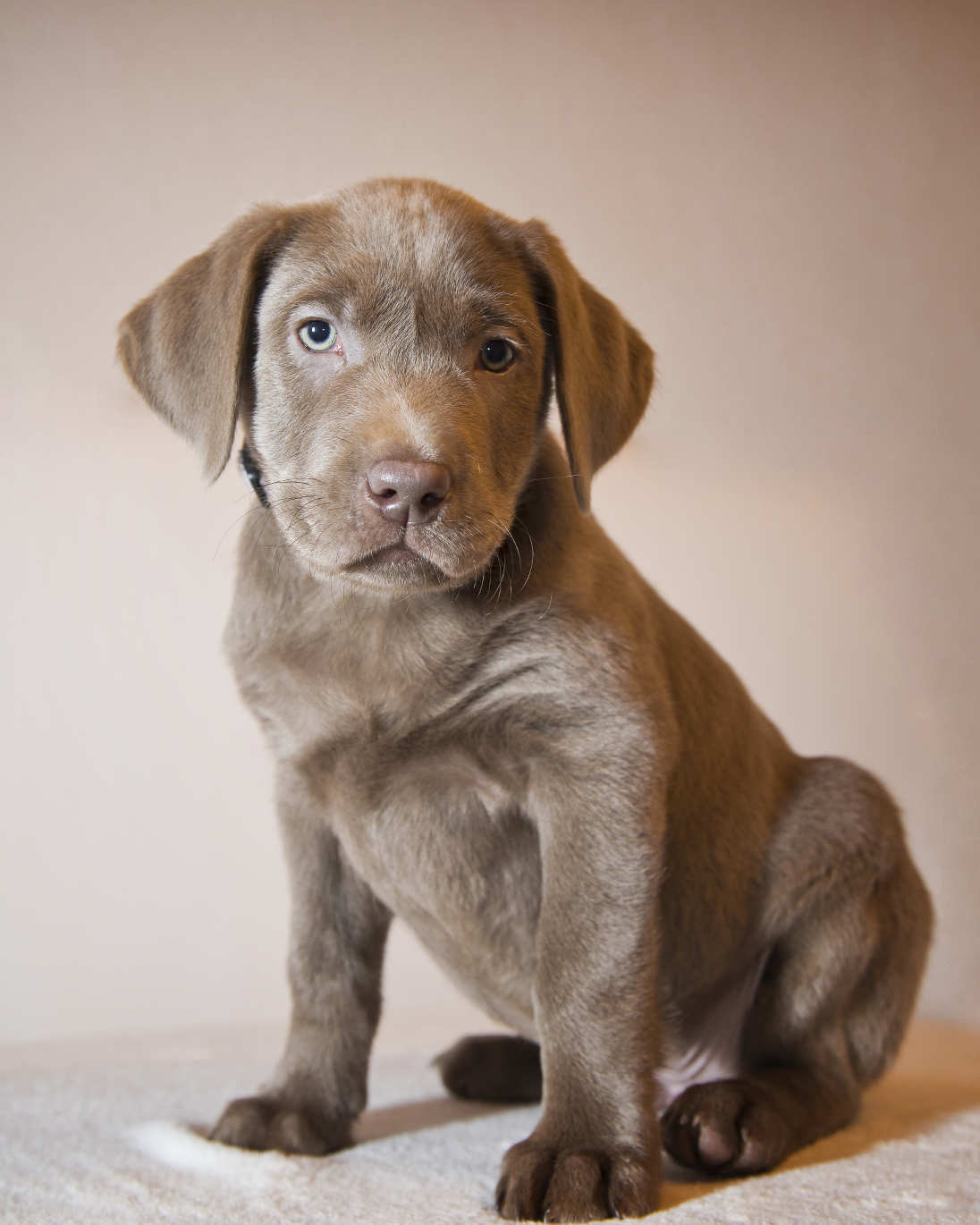
The theory sounds plausible enough as there are clear motives for dog breeders to create a new color variation in an existing breed.
Motives could include financial gain (though breeders couldn’t have known initially how popular the color would be), attention, or just the sheer fun of creating something new.
Diane Welle of Blue Knight Labs does not go quite so far as to directly accuse the breeders concerned
She wrote:
“There have been accusations that these “rare” silver Labradors are actually a cross between a Labrador and a Weimaraner. I will let you be the judge, as there is no evidence at this time, one way or the other. However, it is interesting to note that Silver Labradors can be traced back to two breeders. Those breeders are Dean Crist (Culo) and Beaver Creek Labradors.
Both of their lines trace back to Kellogg kennels (LE Kellogg and Harold E Kellogg) Kellogg Kennels began breeding Labradors in 1922. Guess what else they’re famous for breeding? They’re credited for the ‘rare’ pointing Labrador of course!”
Her point is that ‘pointing’ is, of course, an HPR (hunt point retriever) trait, and Weimaraners are HPRs. An update to her original article, however, also notes that she previously claimed that Weimaraners were also bred in those same kennels, but found out that that fact was in doubt.
Those in favor of the Weimaraner outcross theory often claim silvers have a houndy look about them. To be fair, this is true of many field-bred Labradors of any color. And most silver Labradors today look pretty much the same as any other Labrador Retriever – apart from the fact that they are silver.
The cross-breeding theory has recently lost some credibility due to genetic testing of silver Labs, which has so far failed to show a link to Weimaraners.
#2 Spontaneous mutation
It is not uncommon for genes to mutate. And a spontaneous genetic mutation is another way that a rare or unusual characteristic can appear in a family of dogs that were previously unaffected by it.
This isn’t a popular theory for the appearance of the dilute gene in the silver Labrador. Partly because the other two explanations are both so plausible.
And for a mutation to be identical to a gene that already exists for an unusual coat color in another breed would be something of a coincidence. Many people feel that the spontaneous appearance of this dd dilution gene in the Labrador Retriever gene pool is, to say the least, unlikely. However, it cannot be entirely ruled out.
# Hidden genes
Some people argue that the rare dilute gene has been present in Labradors all along, and that it only appeared, as rare diseases sometimes do, when two closely related dogs were bred.
The capacity of “rare” genes to remain hidden for long periods of time is a phenomenon that most scientists are aware of. This explanation for the appearance of the silver Labrador in the 1950s is perhaps the most valid alternative to the mix breed theory.
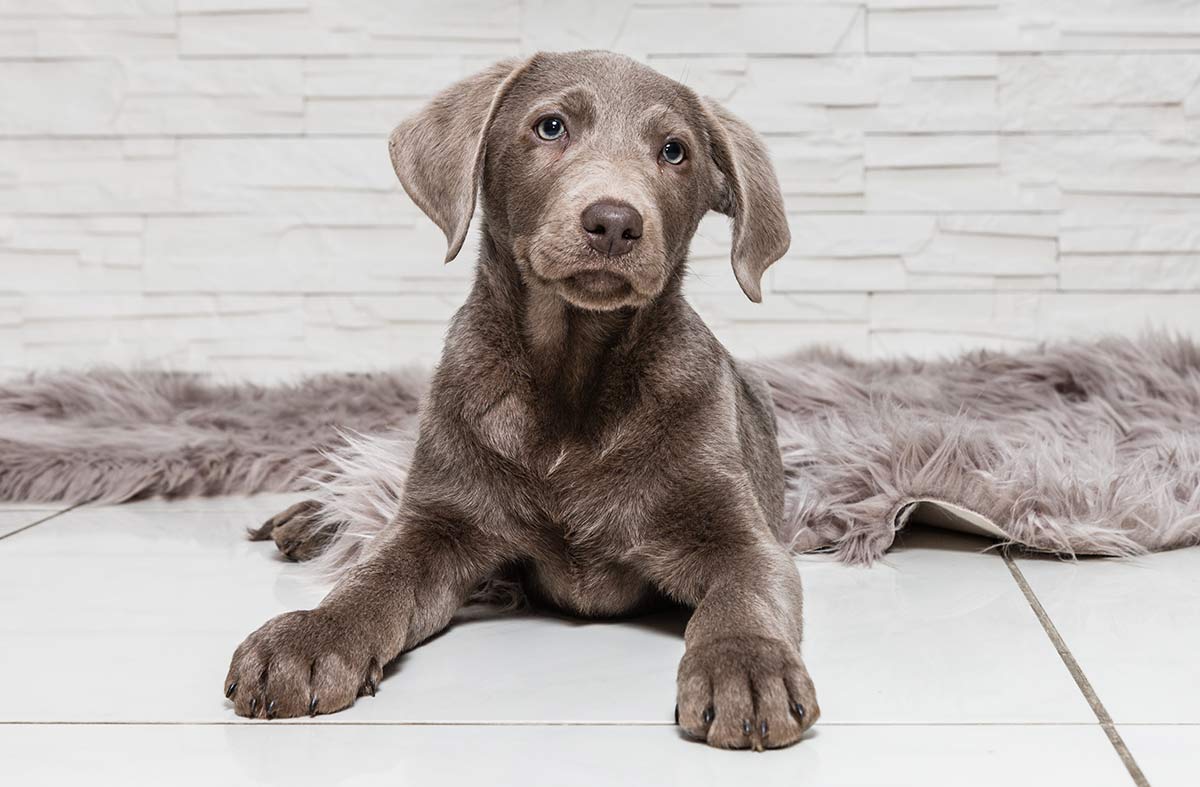
Genes carrying rare diseases or indeed any rare attribute, can remain hidden for decades, only to appear when closely related dogs are mated together. This happens more frequently when gene pools are small, as they are in our pedigree dog populations.
A good example of how that works is B color gene in Labrador. This gene determines whether or not a Lab is basically black or brown. Brown is recessive, just like the color dilution gene, and a Lab needs two copies of the little b brown gene to have a brown coat. And brown labradors only became common when breeders deliberately set about mating them to one another.
The first Labradors were not registered by the AKC until 1917. Before then there would have been regular outcrossing with other similar breeds. Including the Chesapeake Bay Retriever, a breed that does have the dilute gene.

So it is entirely plausible that the little d gene passed from Chesapeakes into one or two Labs before the Labrador pedigree registers were closed and remained hidden in the breed only to reappear in the 1950s when the demand for Chocolates was beginning to rise.
Does It Matter?
Some of you will be bemused at all this fuss over a color. And wonder why it really matters how the silver color got into the Labrador breed. And to some extent I share that view.
I breed rabbits, and with purebred rabbits it’s very common for new colors to be recognized from time to time within established breeds. There are protocols controlled by the American Rabbit Breeders Association as to how this happens, but it’s generally seen as a beneficial and interesting event, not something to be afraid of.
Why it should be considered so radical to do the same in a breed of dogs, I’m not entirely sure!
Of course, most Labrador breeders care very deeply about the future of their breed. Some are concerned about the impact of accepting a genetic change in their beloved breed, without what they feel to be proper consideration.
They are angry at what they see as a dishonest Trojan horse operation to sneak what may be an outcross into the breed line. Pedigree breeders are also commonly committed to the concept of closed registry breeding. And are alarmed at what they consider a threat to the purity of the breed.
Concerns about inbreeding
Some breeders are also concerned about inbreeding in silver Labs. Inbreeding is always a potential problem when breeding animals within a closed gene pool such as our pedigree dog registers. But the problem is made worse when focusing on a small part of that gene pool such as a particular color.
It may be that inbreeding in silver Labradors will not be the problem that it once appeared to be. Former Labrador breeder Jack Vanderwyk, a vehement opposer of silver Labradors, conceded in 2012 that:
Today, in 2012, many, many generations later, the ‘silver’ Labrador population has a fairly viable gene pool, with seven distinct, (almost) unrelated lines. As a result, the average COIs (Coefficient Of Inbreeding) are often not higher than those of other Labrador lines. This means that we shouldn’t underestimate the ‘silver’ population.
It is worth remembering that any risk of inbreeding can be reduced by ensuring a low co-efficient of breeding between the parents of each litter. A knowledgeable breeder will be able to help you with this.
Puppy mills and backyard breeders
There have been concerns that many silver Labrador puppies are irresponsibly bred by backyard breeders or in puppy mills. These concerns can of course apply to any popular breed but are more of a worry when a particular cross breed or color variation become so popular the prices are driven up and less scrupulous breeders try to cash in.
But as silver Labs become more mainstream, there are clear signs that responsible breeding practices are being adopted. And it is certainly possible now, to buy a silver Lab from a reputable breeder
Pros, Cons, And Buying Tips
One of the downsides to bringing a silver Lab into your life is that you may experience unpleasant reactions from those that think silver Labs are ‘ruining the breed’. Or who believe that they should be banned. The comments and social media posts can sometimes be very hurtful
Cons
- Some people may be rude about your dog
- You won’t be able to compete your dog in the show ring
- You may have to pay a higher price than you would for a regular color Lab
- It might be harder to find a responsible breeder in your area
- There may be a small risk that your dog will get alopecia
Pros
- Your silver Lab is likely to have the health and fitness of any other Lab
- This Lab will be as lovable and trainable as any other Lab
- Your Lab will probably be a great family pet
- You will have the pleasure of owning an unusual and beautiful dog
There are questions regarding the registration of silver Labs born in the future. You should be aware that there are people campaigning to have silver Labs de-registered.
Should they succeed it could affect those who want to breed from their dog, or who want to compete with their dog in obedience or field trial competitions that are only open to registered pedigree dogs.
Tips For Buying A Silver Labrador puppy
If you decide to bring a silver Lab puppy into your life, it is very important to find a responsible Labrador breeder.
You’ll need a breeder who health tests all their dogs before breeding, and whose dogs are a part of their lives, not just breeding machines.
Happily, breeding silver Labrador puppies is not mutually incompatible with being a responsible breeder. But you will need to be diligent in order to avoid puppy mills and bad breeding practices.
Silver Labrador puppies should only be purchased from breeders that have tested the puppy’s parents for hip and elbow dysplasia, PRA (inherited blindness) and CNM (a muscle wasting disease.
Remember that a silver Labrador, if registered with a kennel club, will be registered as chocolate. Check the pedigree and health certificates very carefully.
You can find out more about how to find a good Labrador breeder in this article.
Your Silver Lab
If you share your life with a silver Lab, we’d love to hear about them, and about your experiences in finding him or her. We’d also be interested to know if you have experienced any prejudice against your dog because of his unusual coat color.
We love to hear from our readers. So whether you adore silver Labs or oppose them, your politely expressed views are very welcome! Just drop them into the comments box below.
Let us know what you think and why!
References And Further Reading
- “Purebred Vs. Mutt,” The Labrador Site, 2019
- “Dilute Coat Color D-Locus and New D2-Locus,” Animal Genetics, 2019
- “Dilution D Series,” Dog Genetics
- Welle, M, et al., “MLPH Genotype – Melanin Phenotype Correlation in Dilute Dogs,” Oxford Academic Journal of Heredity, 2009
- “Q And A With Dean Crist,” Silver Labs – Just The Facts
- Welle, D, “No Such Thing – Silver Labradors,” Blue Knight Labrador Retrievers, 1990
- “Breed Color Position Statement,” National Labrador Retriever Breed Council of Australia, 2010
- “Silver Labs,” The Labrador Club of New Zealand
- “What’s In The Gene Pool?” Institute of Canine Biology, 2017
- “How Population Size Affects Inbreeding,” Institute of Canine Biology, 2017
- Wagner, S, “The Truth Behind ‘Silver’ Labradors,” Woodhaven Labrador Retrievers
- Hered, J, “A noncoding melanophilin gene (MLPH) SNP at the splice donor of exon 1 represents a candidate causal mutation for coat color dilution in dogs,” 2007
- “Color Dilution Alopecia,” Animal Dermatology Clinic, 2010
- Philipp, U, et al., “Chromosomal assignment of the canine melanophilin gene (MLPH): a candidate gene for coat color dilution in Pinschers,” 2005
- Philipp, U, et al., “Polymorphisms within the canine MLPH gene are associated with dilute coat color in dogs,” 2005
- “Silver Labs – Improvement Movement,” Silver Labs Blog
- Zeirath et al Frequency of five disease-causing genetic mutations in a large mixed-breed dog population. Plos one (2011–2012)
The Labrador Site Founder
Pippa Mattinson is the best selling author of The Happy Puppy Handbook, the Labrador Handbook, Choosing The Perfect Puppy, and Total Recall.
She is also the founder of the Gundog Trust and the Dogsnet Online Training Program
Pippa's online training courses were launched in 2019 and you can find the latest course dates on the Dogsnet website


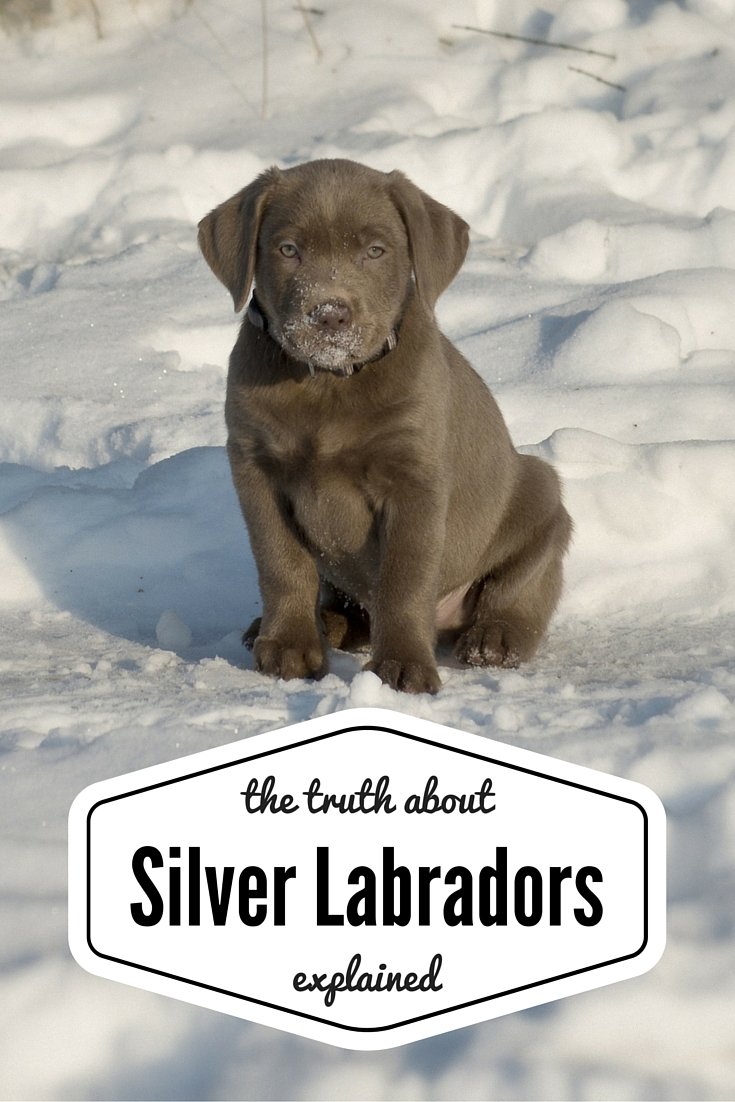
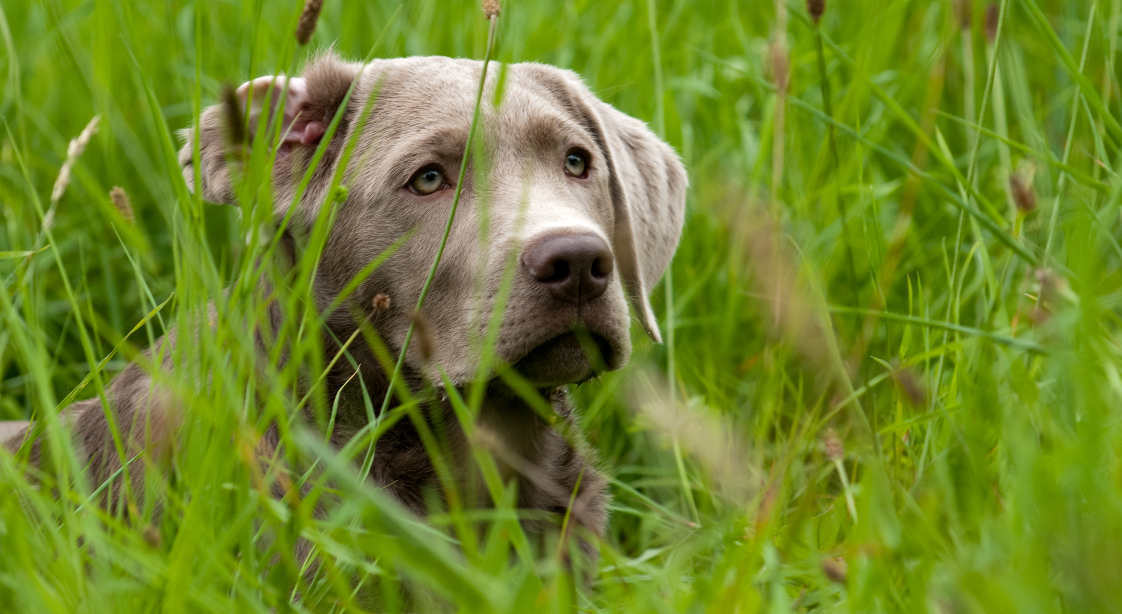
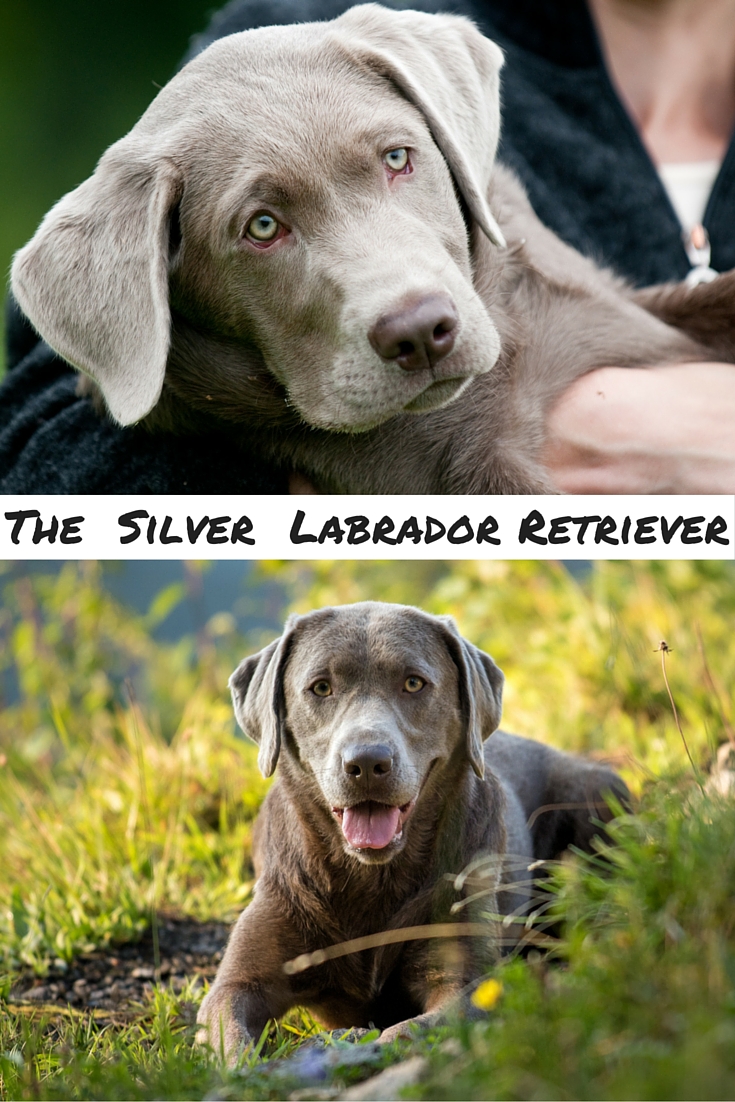


















As the owner of a fully registered purebred Black “English Lab” with an extremely impressive lineage I say this. To each their own. Not everyone buying a high priced dog cares about any of what I just said. The “Silver” Labrador isn’t going anywhere and as most of you know they can even sometimes be registered as purebred “Chocolate” with the AKC. Would I buy one? No. But I also wouldn’t judge someone poorly that chose to.
We have had several labs including our most recent silver girl who is now 6 years old. There is no real difference in behavior between her or any other lab. She’s just as sweet and loving as all of my labs. She does have very sensitive skin similar to my chocolate lab. She develops hot spots in the summer that can only be controlled with steroids. We didn’t seek out a silver lab. We put a deposit on a lab months before losing our 15 year old yellow lab and this silver girl happened to be born the same day we lost our old lab. It’s odd to me that anyone would be negative about the color of a lab. People buy labs based on color and build all the time. Silver labs are a recessive chocolate, not a Weimaraner. The only difference between them or any other lab is coloring. Enjoy and cherish any lab you get as they are amazing dogs!
Yep it sure does!!!
Good article. It seems highly probable that the silver dogs were originally crossbred with Weimaraner dogs. 70 years of cross/in breeding has probably washed the Weimaraner dna out of them. More importantly do the silver dogs have webbed toes, otter tails, line down crown to nose? If so you probably have to call them a lab, if not they’re crossbreeds. I’m in favor of the purity of the breed, but not so hard headed that breeds are and will be tampered with by man.
Our Silver Lab is the sweetest dog we have ever had. When he was a puppy that beautiful coat and blue eyes made him a magnet for oohs and ahs. He has golden green eyes now. No hating on this 3 year old sweetheart.
Are there any silver lab breeders in Illinois??
We have 4-year old, AKC registered, male silver and female champagne littermates that we got at 8 weeks old. They are the sweetest, most loving and intelligent dogs. They play well with each other and are totally devoted to us. People stop us all the time to ask about our silver. He has the coat of a velveteen bunny, a grey/brown nose and grey/gold eyes
The Silver is registered as “Chocolate” with the AKC correct?
Yes.
We have 4-year old, AKC registered, male silver and female champagne littermates that we got at 8 weeks old. They are the sweetest, most loving and intelligent dogs. They play well with each other and are totally devoted to us. People stop us all the time to ask about our silver. He has the coat of a velveteen bunny, a grey/brown nose and mesmerizing green/gold eyes. I just joined this group today, and the only negative, truly negative words I have ever heard about the silver lab, I read here…. I thought this site was devoted to uplifting the entire lot of these incredibly wonderful, affectionate, intelligent dogs that bring so much to our lives, regardless of color… hmmm… sounds like the rest of the world. I pass ….
Excellent information – thank you for posting!
We have a black lab who is 6 and is every part of our family. We heard on Facebook about a family needing to find a new home for their silver lab who is 2 years old. I was in awe of her immediately but hesitant at first. I needed to see her and meet her to make sure she was taken care. We went and saw her, she won us over immediately. She’s only been with us since March of this year but she’s part of our family and an amazing sweet loving dog. I can’t imagine anyone would want to to discriminate against silvers just because of their color. I am glad I found this article as I had no information about silvers only Info on Labradors in general from our Axle boy. This article was great to read and thank you for shedding some light for me 🙂
I have raised 26 labradors in my lifetime. None of them are the “New fad colors” & when I’ve purchased my most recent I made sure none of them carried the dilute gene. I am not a fan of damaging the breed I love. I never will be. If you want silver… get a Weimaraner.
“…damaging the breed I love.” ROFLMFAO
Haters gonna hate, hate, hate…
You seem really smart
We just went today and put money on our new silver lab puppy today which will be coming home the end of June.We have owned black and chocolate labs before and there were the best dogs we have ever owned.Reading some of these comments about the silver I had no idea about all the controversy.We bought this beautiful dog to be a part of our family nothing else
Hi, I would very much like to have a silver Labrador in my life, so beautiful… but I can’t find any for sale. Are there any more available where you got yours?? If so I’d be incredibly grateful if you could pass on their details? Thanks in advance, Nikki
I’m a dog lover! Considering getting a silver. My son wants an affectionate buddy. Do labs fit that category? Which is more likely to be affectionate: male or female? Thank you!
We have a registered chocolate lab that is turning white at 6 years of age. The change started after she spent a night at the vets after consuming coffee beans. The vet said she was extremely upset during the night and recommended we take her home. Shortly after she began showing white spots over her entire body. The spots a quite large in some areas and less so in others. What in the world is that all about?
I have a 1 1/2 year old silver purchased from a reputable breeder who raises field hunting labs. I did not purchase for color, but fell in love with his picture on FB when listed as one of 2 remaining in his litter. (The other was a charcoal….mom was silver dad was black). He is just perfect! (He’s the 4th lab I’ve owned.) He does have a weird coat, though. I’m not sure if it is dilute alopecia or not. When his adult fur came in, he had a ridge, or strip of coarser, darker grey fur down his spine, tail, and neck. The fur on his sides is lighter colored and very sparse…almost like belly fur, but a little thicker. He looks like he has white side walls!!
As far as the controversy, I have had some negative comments, but could care less. NO DOG IS PURE BRED… they all descended from wolves and were bred by humans to be what they are today.
I adopted a rescue silver lab (along with her bff cocker spaniel) 2 years ago; they were found wandering along a road..the vet thought they were about 2 years old. My lab is black but with a definite silver sheen and everyone thinks she is absolutely beautiful! I had never heard of a silver lab so was very interested in your article.
I think getting a silver lab would be manageable to me as I really just want to have a companion for my other dog so they can play games that’s just not possible with a human-to-dog interaction. I don’t seek to breed or join show rings so the advantages definitely outweigh the challenges of raising one. Reading this article actually even makes me feel the need to give a home to one.
There is no such a thing as a Silver Labrador. They probably have Weimeraner in their background and look like they do.AKC DOES NOT recognize Silver Labs!
Did you even bother reading the article or did you just come here to spew rhetoric. Another hater that needs help with the big words
Please stop calling these weimaraner mixes “pure labs” “pointing labs” or silver labs. Weims point, labs don’t. Anyone with eyes can plainly see that these are mixes. I’ve owned both breeds. Labs don’t carry a silver dilution gene, weims do. Blk dilution to choc and yellow is a fact and a common occurence—but not silver. They may be nice dogs, but not true labs. It’s the most obvious scam perpetrated by bored Labrador breeders back in the 1950’s. AKC etc. will give any dog “papers” if someone writes in the parentage info–even if it’s made up by the breeder. NO one from the akc shows up at your door asking to see proof. Pay the fee and you get “papers”. Please don’t tarnish the breeds by combining them.
I have hunted with gundogs most of my life. I have seen a number of labs point. Sad there are still individuals out there that remain closed minded to a canine abilities to go above and beyond.
Funny my 10 yr old SILVER LAB had genealogy done hmmmm no weimaraner just lab but keep ur theory goin there. Best dog I’ve ever owned had yellows& blacks but sticking with SILVERS
I have am almost 8 month silver lab. We are noticing some aggression that has come out of the blue. It started 1 month ago with food and is no aggressive when we go near him. He does have elbow dysplasia in both elbows. We don’t know what to do. Do silver labs have behavioural issues.
I have sent you an email sent to you today, with the title line “silver lab photo,” regarding my 13 year old charcoal AKC registered dilute Labrador Retriever female who her AKC registered name is Crown Royal Caviar, and Caviar’s two grandparents are Bob Culo and Culo Toot the first two AKC registered silvers from Culo’s, and Caviar is also out of Beaver Creek bloodlines. I believe I might have one of the only dilute Labradors left alive that is only 2 generations off from the first two original AKC registered silvers from Culo’s, and 3 generations is what is covered in today’s modern DNA tests To Prove Purebreds. This April, 2019, we performed a cheek swab DNA test through Wisdom DNA on Caviar, and We Did Indeed Prove Caviar is 100 percent purebred Labrador Retriever!! Caviar also tested through Wisdom in April, 2019, to be DNA Clear on all 152 genetic diseases, Not Even One Carrier, and Caviar also had her OFA hips prelimed at a passing or Fair rating while she was in heat, at age 1 1/2 years old and I’m certain if we retested her when she was not in heat, after she turned two years old, that she would have received a higher permanent OFA hip rating. But I can say for a Fact that via Wisdom DNA, We Have Indeed Proven that the silver Lab controversy surrounding the integrity of the AKC purebred registry being polluted with a mixed breed of Weimerlab is in Fact A Myth, and I for one at least own a 100 percent purebred charcoal dilute AKC Labrador Retriever that also proves the first silver Labs were indeed DNA 100 percent purebred Labrador Retrievers, as we’re the two parents now proven to be indeed 100 percent purebred Labrador Retrievers because the Wisdom DNA test proves all three generations of AKC registered Labs within Caviars pedigree at least are in FACT 100 Percent Purebred Labrador Retrievers!! I would Love to have these DNA test results confirmed and Caviar examined and an independent AKC representative come to confirm the Wisdom DNA test results are in fact from a swab from Caviars mouth, to End The Silver Lab Controversy While Caviar is still alive and well, but Caviar is now 13 1/2 years old and quite Elderly, so let’s not miss this window of opportunity with the actual Real Opportunity to prove that silver Labs are in Fact 💯 percent DNA Proven to be Purebred Labrador Retrievers Before this real evidence slips away, and I would Welcome All To Respond!! FYI, Caviar has all the characteristics of any well-bred Purebred Labrador Retriever, she does Not Have The Weimerlab look, a very blocky head with appropriate ear length, broad backskull with excellent stop and broad nose, shorter otter tail, gorgeous conformation with the right length of leg, tight knuckled toes, and a very thick dense Downy double coat with tons of hair especially harsh guard hair and tons of undercoat. Finally, let’s put this silver Lab controversy to rest and we are Simply Silver Labradors located in Idaho and quality reputable AKC purebred Labrador Retriever breeders in All colors since 2007, DBA Mellow Yellow/Simply Silver Labradors on Facebook, or our website is http://www.silverlabs.iwarp.com. I Pray that an official AKC representative will make a journey to my home to DNA test Caviar while she is still alive, and welcome Anyone to help put me in touch with the right contacts to Finally Prove The Purebred Silver Labrador Retriever Does Exist, And End This Controversy Before We Miss This Opportunity Because You Can’t Argue With The DNA, AND I BELIEVE CAVIAR MIGHT BE THE ONLY DILUTE LABRADOR LEFT ALIVE WITHIN 3 GENERATIONS OF THE FIRST AKC SILVER LABRADORS PARENTS TO FINALLY PROVE THIS VIA MODERN DNA, AND THIS WILL FINALLY PROVE ALSO THAT THE INTEGRITY OF THE AKC SILVER LAB PUREBRED REGISTRY IS INDEED INTACT EVERY GENERATION FORWARD TOO!!
You should also get a cheek swab on video with affidavit and notarized for posterity. This way if something does happen to Caviar you have proof of DNA. Just my opinion. I love labs. I only rescue dogs but I too would love to see this issue put to rest so that backyard breeders can’t profits so much off the backs of these beautiful dogs.
Despite your claims, there is no genetic test which proves breed purity and no genetic test is valid in establishing whether or not any dog is the breed the owner represents it to be.
Ian Dunber, you make a very broad and absolute statement. Do you stand behind it?
Smokey our 6 year old Silver Lab was rescued from an animal shelter when he was 3 years old. He had an issue with his coat, and with the help of our vet we’ve gotten his coat back, but instead of a fur, it’s more of a soft silver down. He’s one of the most loving dogs we have ever owned, is super smart, and seems to want to keep everybody happy! If there are ever squabbles going on between any other dogs, he seems to have this need to step in and end whatever the differences are between the dogs(most often works too).
Janie,
I have an 8 year old Silver Lab named Smokey too. He also has coat issues and has lost a lot of it on his sides. I would LOVE to know what you and your vet did to get his coat back. I would prefer a “soft silver down” over no hair any day.
I would greatly appreciate any help you could give me.
Thanks a bunch!!
I have no issue with the recessive color labs. However I believe in adoption. If I could adopt a silver or charcoal I would.
I agree. It has been my experience, that when I wanted a dog, I didn’t go to the shelter looking for a specific breed, I looked for “that” dog. I will say though that I do have one thing in mind, it has to be a big dog! From there I’m good. My most recent is a Yellow Lab named Bear who I found at the pound! To be honest, I would’ve loved another Lab, I have 2, but didn’t go looking for one’ this one just popped out at me. Don’t shop, adopt!
Correct me if I’m wrong but in my research about the silver lab. From my understanding the Newfoundland had the recessive color Gene dd which is the labrador as we know it today. Also in my research I found that the skin issues is not dd but is d1.
I haven’t read all the comments – so please forgive me if someone has already answered this – but if you do genetic breed testing on a Silver/Champagne or Charcoal Labrador (which I think are gorgeous, by the way), would it not come up either 100% Labrador or Labrador with a degree of Weimaraner (if that is in fact the case). Has no-one genetically tested their “dd” Labrador?
Maryb: An ordinary breed identification DNA test doesn’t typically look at enough genetic markers to be as reliable as one might like in ruling out possible cross-breeding many generations ago. However, Dean Crist, the American Labrador Retriever breeder credited with first popularizing silver Labs, had his dogs studied by a university professor who was able to do advanced DNA studies to determine that his silver Labs were indeed purebred. Subsequently, Crist offered a $100,000 silver Lab challenge to anyone who could prove his silver dogs were not purebred Labs. Despite all of the dishonest people who claim they know for a fact that silvers are Weimeraner hybrids, no one has accepted Christ’s challenge. You can guess why.
Yes, the breeder I got my silver lab from told me about that issue. Lace is registered chocolate, but she is a 2yr old, 84lb silver lab who is my heart.
There was no dna study. DNA testing was not available for another couple of decades. Crist’s challenge was made because he knew that it was impossible to do dna testing.
There is still no way to accurately determine if a dog is purebred through dna testing. Red the disclaimers and fine print.
Gail: DNA was discovered in the 1950s. As with many scientific and health-related subjects, studying animals was always part of the early research. DNA testing to establish human paternity with practically 100% certainty became common in the 1970s. The AKC and the LRC did not start their multi-year investigation of Crist’s kennel and his AKC-registered silver labs (the registrations had “silver” printed on them) until the 1980s. It covered multiple states, delved into pedigrees and ancestors’ kennels, etc. and extended into the 1990s, if I am remembering correctly. Of course you could not get DNA testing for $99 from your mailbox, but a university professor with a DNA-capable laboratory and graduate students at his disposal would (and did) surely sink his teeth into a genetic mystery such as whether silver labs were purebred or mixed. And every single time, the serious investigations have come to the same conclusion: Silver labs are purebred labs.
I stumbled upon this article because my family wants a dog. We aren’t purists and I’m looking at shelters to rescue a dog. A silver lab puppy stopped me in my tracks and I want to inquire, but I’m concerned about the puppy’s health. How do I go about finding the health info out without knowing who mom and dad are?
You would have to go to a vet and run tests
We have 2 Labradors, 1 Red & 1 Silver. Gracie Lou, our almost 4 yr old Red lab is super smart, happy, & loves to play catch. She is very competitive when it comes to running, she will race you anytime & loves to win!
She seems petite (60 lbs) compared to parents & litter mates.
Together we have figured out a few hand signals without really trying…she can sit, lay, roll, high five & stand without me saying a word. We love her dearly & our daughter has certified her as an emotional support dog.
Now our Silver, Daisy May is almost 1 yr old is completely different! She is a solid 80 lbs of fun loving happiness & very friendly but a bit defiant at times.
She has learned a lot from Gracie whom Daisy adores but can be also be very dominant over her when it comes to playing with toys.
Daisy is on a daily medication for allergies or she turns bright red all over her body & gets a rash on her belly plus ear troubles.
We love both our dogs very much & plan to add a third within the next year.
We recently purchased a silver. My husband fell in love with her color she is the seeetest dog ever and we wouldn’t change her for the world. We drove 3 hours to get her at 20 weeks old. Took her to vet last week and they said she’s perfectly healthy and they fell in love with her also !!! Everyone loves their dog for different reasons . If you don’t like silver that’s fine there are many colors of labs!! But we wouldn’t trade Skylar for anything and are actually thinking about letting her have one litter when she’s old enough .
Just because they are sweet is no reason to breed them. Need to do many health clearances first.
I have been curious about the silver labs and any health problems …. in Utah we have lots of silver breeders, but we are partial to yellow so we purchased a female ended up being champagne golden and she has blue eyes/silver eyes from parents 1)female yellow ( from two yellow parents ) shown championed AKC both conformation ( open and junior) and field trials As well as family companion to a family of 5 children. 2 ) Champagne AKC golden male avid duck hunting retriever and service dog ( from yellow and chocolate parent) to their son with autism -both have brown eyes both black noses. 3 pups ( one female 2 males) came out champagne yellow with blue silver eyes others came out yellow with brown eyes and black noses, not outrageously expensive, AKC application, all tested with vet checked and parents ofa certified. Yes rare will she be loved -tremendously! She is very smart too already taken out with older labs and will be eager to retrieve by fall as well as very gentle with my grandchildren and no one is not welcome for attention like most labs. So just wondering how pups like this affect the long term lab breeding genetics ( this female will be fixed-but assuming others would find this very marketable )
As breeders, the color of a Labrador should be very low in order of important qualities.
As prospective buyers, the color of the Labrador should be very low in order of important qualities.
I’ve seen a lot of problems from both sides. This is what I try to stress to buyers.
you should not be breeding.
Thats pretty rude to say. General looks should never take priority when getting a dog assuming is healthy. 1st thing should always be attitude and there traits when it comes to that. If the dogs more rough or calm a chewer a whiner etc. Then should come looks. If your picking a dog solely on the way it looks and nothing else you will likely run into many undesirable habits later.
I can’t say I really agree. As the owner of a fully registered purebred “English” Labrador with an extremely impressive lineage his looks did in fact matter, they mattered very much. If someone has no plans to ever show the dog than ok looks aren’t as important. However when someone is paying many thousands of dollars for a dog to show the looks are extremely important. A fully registered “English” Labrador with a strong lineage can cost upwards of $5,000. If the dog doesn’t look basically perfect according to breed standards in the ring you’ve absolutely overly paid… a lot.
It’s obviously possible to get a “Silver” in some parts of the country for as little as $750-$1,000. In that case I agree looks aren’t a deal breaker. Otherwise then as I said before the look of the dog is extremely important.
I have a beautiful silver girl. She is health tested and clear of all Labrador diseases. She has her OFA clearances as well. She is hunt titled in AKC and UKC. She also has her Canine Good Citizen title. I have had Labradors for 40+ years. She is a Labrador. The best I have ever had.
We have had our silver female for 6 years. We happened to come across a breeder that was selling them, and we fell in love with her immediately. We have always had labs, and did not choose her because of her “designer color”, but because she was beautiful! Never had any intent on breeding her, or care what she was registered as, we just wanted a friend, a loyal companion, and a puppy we could make part of our family. She has lived up to those expectations, and far surpassed them. I could care less what our girl was bred with to become who she is, because I love her for being one of the best dogs we have ever had!
Lighten up world and just let people be happy!
I love this comment. We also came across a breeder that had puppies and they happened to be Silver labs. That’s where we got our Diamond. We just thought she was beautiful!! Never considered a color just wanted a Labrador. We are loving her everyday. She is now 8 months old!!
I’ve been researching about having a puppy trained as a service dog for my 9 year old son who has high functioning autism. Absolutely love how beautiful silver labs are but I’ve never seen one trained as a service dog. Anyone with experience know if a silver lab would be a suitable fit for a life long companion and support dog?
I’ve seen a handful of silver labs used as service dogs, however choosing an appropriate service dog is much more involved than simply choosing a breed and color. Finding an appropriate breeder and then even the right puppy is still a challenge since it’s a rare dog that will end up being suitable and being able to successfully pass once all of the training is complete.
If I were you, I would get in touch with a reputable trainer as well as a behaviorist to have BOTH of them help choose the appropriate dog to be trained. Be aware however that if you go the route where you choose the dog yourself you still might end up with a dog that doesn’t end up passing (called a wash out) and will have a pet that might not be completely suitable as a service dog for your son. What this most likely would mean is that the dog wouldn’t be capable of joining your son in public. You’ll be much better off if you can find a program which will provide you with an already trained dog. This would also be a faster route as training a dog from scratch takes about 2 years.
I completely understand however how difficult it is to find any programs that have availability due to the number of people who need assistance. Please be careful as there are also a number of nefarious people out there who will steal your money and not provide you with the appropriately trained dog for your son. I’d also suggest seeking out groups on Facebook for advice and assistance. Either search for service dog groups, service dogs for people with invisible disabilities, parents of children with autism, etc.
Also, check out Becca and Frannie on YouTube for suggestions on finding a service dog and training tips if you do choose to get your own pup. All my best to you and your son (from someone w/ high functioning autism).!
I got my silver lab at 10 weeks old and started training him immediately to be my service dog for myself for a crippling bone disease. He will be 1 in a month and I have never had a lab so easy and eager to train. While out most people think he is fully trained by pros he does so well. Our biggest problem is stopping everyone from wanting to pet him because they are just to earn cute. We did have skin issues for a bit but with monthly baths at doggy parlar with oatmeal shampoo and now haven’t had issues for over 3 months. I couldn’t have picked a better dog to train.
well I personally don’t care if my lab is black green or purple but mine is a year and a half old black lab with white marking and we love her. If you get a lab make sure you keep it mentally and physically challenged or it won’t be happy they get bored easy. but my true comment is that the AKC and there in breeding for look has ruined the gene pool in this country if you want a healthy dog look outside the U S got our German Shepard from Germany and never had a health issue
I’m confused as to how a champagne labrador with the dilute gene can be considered genuine and yet it’s questionable as to where the dilute gene could have come from within a silver fox labrador.
Surely if you took a champagne labrador with two diluted genes and bred it with a chocolate or black labrador the offspring would then contain the dilute gene (even though they’ve both come from labradors), at that stage they would probably be all chocolate (or black) labradors because they’d receive the diluted d gene from champagne side and the full D gene from the chocolate (or black) side. But then if you took another set from another group of dogs that had also been bred in the same way, then some of the dogs at the end would come out silver as they might gain a dilute gene from both of the previous dogs rather than one dilute gene and one full gene… eg.
Grandmother 1 = Champagne Lab = dd
Granddad 1 = Chocolate Lab = DD
Dad = Chocolate Lab = Dd
Grandmother 2 = Champagne Lab = dd
Granddad 2 = Chocolate Lab = DD
Mum = Chocolate Lab = Dd
Dad Chocolate Lab (Dd) + Mum Chocolate Lab (Dd) = Pup Chocolate Lab (dd) = Lab with dilute coat.
There is of course many other combinations in that situation that you could also end up with too but as the dilute gene is already in the breed then there is no reason why it can’t spread across the breed, but it could take time considering the chances of firstly someone mating a yellow lab with a black lab, which as yellow labs weren’t that popular before the 1800’s was unlikely to happen, and then for that labs siblings to go be bred with another labs siblings that have been mated in the same way. There was only 150 years (1950’s) between the yellow lab appearing and the silver fox appearing so this it’s highly plausible that this could have happened.
Many of the silver Labs that I see have either blue or pale green eyes (although nearly as many display a light brown color). Are these “Weimariner” eye colors consistent with Labrador d/d genetics or are they clearly evidence of outcrosses?
Labradors do not have blue eyes period! It comes from the weimaraner which also carry the dilute gene. The dilutes arose from a cross between Weimaraners and Labradors by an idiot breeder in the 1950’s.
Liz, you appear to be uninformed and are incorrect. My FULL BREED Silver Labrador Retriever had blue eyes as a puppy and eventually changed to a hazel color as she grew into her first year. I have had several AKC registered chocolate labs that were born with blue eyes that eventually changed over to green or hazel. The eye color is a reflection on the level of dilution, that’s all. The more dilute characteristics the lighter the eyes will be and for a longer period. The Weimariner cross is a myth created and perpetuated by yellow/chocolate/black lab breeders that do not want to see their income diluted by the growing demand for these gorgeous Labrador Retrievers.
For me as just a dog lover (regardless if those puppies are pure or not), as long as the dog is intelligent and healthy and can protect me and my family and can love us more than we love each other i can still care and love him no matter what… i know this is all about business to all labrador breeders but just in reality they are smart and very loving animals..Actually i have one silver labrador and he is one of the sweetest and protective dogs i have he made my parents and family happy all the times…
we have a 3 year old silver he is very smart and beautiful we’ve had people argue with us about him not being a lab he is registered with the AKC but as chocolate i don’t think it’s fair, but my vet made me feel better when she said you can tell the difference between a lab and the weinmer silver labs have wavy fur down their spine .we got him when he was 8 weeks old and she knew the first time he went into her for shots, what he was without asking. so i think the AKC should register accordingly
Could you send me info on a reputable breeder
Kentucky labs are great!
I think it’s with all breeds, some owners interbreed and some do their best to keep the breeds pure. It’s a money market and you have to be very careful who you get your puppy from. I think the Silver labs are beautiful, I think the chocolate, black and yellow are beautiful as well. I bought my granddaughters a chocolate lab. And I’d like to own a silver lab someday. People are cruel. I don’t think it should matter, there is proof that they have been around since 1922. So, I feel that if you do your research on the type of puppy you’d like to bring home, then do it, love him/her, treat him/her right and you will be surprised at what you will receive in return.
Have a Heart!
And don’t even get me started on the AKC.
We have a one year old female silver lab. She is smart, sweet, and beautiful. Training her for basic obedience was quite easy, as she is intelligent and easily motivated by food and praise. We have had nothing but positive interactions from folks. Many people have asked if she is a silver lab, so perhaps knowledge of the breed is spreading. A few have asked what kind of dog she is because the color is that of a Weimaraner, but the shape is not. Not one single person has said anything negative to us about her. We have only had positive interactions. We have even had interest expressed in breeding her (which we do not intend to do.) She is a joy. We did not search out this particular color. We just happened to know the breeder, and knew several people who have gotten his dogs over the years. The folks we know use them as hunting dogs and/or companion dogs, and all have been very happy with them. We have no regrets. She is a joy, and we are completely smitten!
Can you give me the info on the breeder please?
We discovered “silver labs” about 3 months ago. We had never heard of one before, never seen one before. We found one fairly close by and made the purchase, having never been dog owners, we didn’t know what we didn’t know. We were told he was the “smallest male of the litter” and he was, at 5 months he was only 22 pounds. We figuered he just needed some “fattening up” and not competing for food would take care of that. Fast forward a month and we discover that he had a congenital defect and we needed to put him down. It was horrible and heartbreaking. We decided we’d never do that again, but there was such a hole left behind, we ended up getting another! He came with health certificates and OFA certs and DNA profiles on the parents, we bought him, had him examined and tested top to bottom and he’s been a great and loyal dog! Every bit a lab!! Our oldest son then bought our dogs sister, same litter—within a week of the purchase, with all the same certifications, she too had to be put down due to mega esophagus! My only point here is this: dogs get sick, we have not had good luck, 2 of 3 dogs had to be put down, but that’s the way it goes. These dogs could have suffered the same fate had we rescued them or bought them—but to say they aren’t Labs is just crazy talk. These are Labs by any standard applied, EXCEPT coat color—we were very unlucky in our situation. But that does not mean there is a defect with the breed, it just means “crap happens” and it happened to us.
We have a 10 month old Silver Lab that we are putting down day. His name is CAMO, he was dealt a bad hand of cards. His hips and front elbows are shot. We reached out to Ohio State, VA Tech, and several Vet’s in our area. We were told it would be inhumane to put him through surgery. That said, we love him to death and will place him under his favorite place today, the pear tree’s. It’s going to be a sad day today, our Little DUDE was a joy and blessing. He will be missed. I highly recommend researching your breeder in depth, asking for a ton of references, and contacting a few of the current owner’s (purchased within the past two years) to see how their puppy’s are doing. We don’t want anyone else to go through with what we our dealing with, our hearts are broken.
What an incredibly well written and researched article on the controversial doggo!
I have purchased 10 Silver Lab pups, starting in 2006. All males and defiantly LABS. I have had Labs since the early 1970s. No difference, other than color. Beautiful heads, coats, and minds. I purchased my first two full brothers, in 2006. They did have some slight skin issues, but none of the others have. I am getting ready to train one, of my current pups, as a Companion Dog, for my disabled husband. I will certify one, or maybe two, as Therapy Dogs, which I have done, with Labs, before. I have pups 8 months, 4 months, and 8 weeks. I have purchased all my Silvers, from the same breeder, who I think is great. I remember when she started breeding the Silvers. She traveled all over the US to get her males. She then bread them to her chocolate females. Then, she would breed those female chocolate pus back to another silver male. These produced the silver pups. Usually mixed liters, but eventually, she got all silver/charcoal litters. It was a painful process. I have total confidence in this breeder. No questions, on my part.
Who is your breeder?
Am interested in a silver.
Can you give me the info on the breeder please?
We have had yellow labs for 29 years. Now we have a chocolate lab sand silver lab who are both 18 months. There is a big difference between our yellow and chocolate labs to being smart. Our silver lab is the dimmest dog compared to the others. He lacks being smart. Is this common with silver labs?
Judy H, where do you get your misinformation? Can you cite sources? Do you realize how self-defeating your argument is that the nefarious alleged cross-breeding occurred too long ago to be detected by DNA testing, but recently enough that the temperament of the silvers allegedly “could be anything and will not be consistent?” Those who aren’t sure that silvers are purebred Labs with genes that have been in the breed since the beginning are invited to do their own research. Please Google “images of dilute Newfoundland dogs” and “founding breeds of Labrador Retrievers.” The AKC recognizes dilute Newfoundlands; they are registered as “grey.” In addition to Newfoundlands, there are other founding breeds who may have been the source(s) for dilute genes that have been in the Labrador Retriever breed since the beginning. The AKC used to register silver Labs as silvers (there were silvers whose AKC pedigrees and registrations formally listed silver as their color) and switched in the 1980s to registering them as chocolates because that is what modern science revealed they are, dilute chocolates. It is similar to how the AKC doesn’t register red (informally known as “fox red”) Labs as red, they register as yellow because these beauties are genetically a shade of yellow.
I have a four year old silver lab. Previous to her we had a Yellow lab, which passed away at 13 years of age, To say the silver lab is not a true lab is insane. She in every way represents the beauty and loyalty of this awesome breed. and is just as much a lab as my yellow boy was. It is sad that this is even a debate.
I agree Amy. I have a 12 week Okd Silver Lab and he is AKC registered and is beautiful. I have gotten pushback from people though. It’s insane.
I do not bash the dog, I bash the breeder.. AKC does not accept the color silver- at all. Fox red is a yellow lab hence the standard reads that a yellow is anything from a cream to a fox red in color. Black is black, period, chocolate is brown, period. Yellows and chocolates appeared in England ages ago. However silvers did not appear until the 1980’s and they first appeared a the home of a breeder who bred both Weimereiners and Labradors- big surprise. If we had only had dna testing for dogs in the 1980’s we could have nipped this in the bud, but now too many generations have passed. If you wonder what the big hoopla is about , welll here it is. You are not getting a Labrador temperaments. You are not getting a Weimie temperament. You are getting a mixed breed temperament which could be anything and will not be consistent. You will get the skin problems of the dilute gene.. The dilute gene and the chocolate or yellow gene are not the same. If you think that AKC accepts the silver color just try registering your Labrador as a silver or a charcoal or a champagne and good luck with that.
I had never heard of this new introduction to the breed. My uncle breed labs in the 1970s-80s, and we owned a pup from his breeding dam.
Recently a strange dog appeared on my farm property and committed a heinous act which I witnessed. The authorities asked me what kind of dog it was, and I said it was a maybe a lab mix that was gray. Weimeraner was in the back of my mind, so when I looked up Weimeraner attributes, I felt convinced that the dog was a Weimeraner.
My husband who did not grow up with purebred labs, thought it was a chocolate lab.
The dog did indeed look more houndlike. It had longer legs, a slimmer appearance, a no characteristic head shape that was broader (I even wondered if there was a trace of pit bull blood), a coat that didn’t look like chocolate at all… and yet this creature bore an AKC tag, so I thought it had to be Weimeraner.
The owners revealed it was a “rare and expensive Labrador.”
I must admit that it felt pretty outrageous to me. I couldn’t even recognize it as a purebred lab, and inexperienced laypeople can’t tell the difference.
No one mentions temperament. They may be cute, but how trainable and obedient are silvers?
As for me, I definitely am convinced by my own eyes that this is a “designer dog” lab/Weimeraner outcross.
I do find it outrageous that the AKC has lowered their own standards to turn an extremely blind eye in this case. I agree that some breeder was able to slip them through.
This has definitely lowered my respect for the AKC.
Hi Racine,
I am a registered CKC breeder of conformation or “English” Labradors. You are definitely right to think it has Weimaraner in it as that is exactly where the grey colour comes from. These dogs have the dilute “d” gene from the weimaraner in them. They are not a rare colour of Labrador at all! I am horrified at what unethical breeders are doing to the beloved Labrador breed. The only recognized colours are black, yellow and chocolate. The dilutes are advertised as silver (chocolate), charcoal (black) and champagne (yellow). They get registered by the AKC and CKC and other registering bodies as their base colour because the forms do not have a space for the dilute colour. This is fraud! The parent Labrador club sets the breed standard and all of them denounce and don’t recognize these coloured dogs as purebred Labradors. All the AKC and CKC does is register them from what the “breeder” fills in.
These dilute dogs come with a host of issues including severe alopecia and skin problems. The people that buy into this rare colour are ignorant and won’t believe facts. They are paying enormous amounts of money for a mutt. Ethical breeders like myself will keep advocating for testing before registration so any dilute dog cannot be registered as purebred Labrador. We test our breeding stock for the dilute gene as unethical breeders have been able to fraudulently tap into the gene pool of pure non dilute dogs.
Months after losing our yellow lab, we got a darling charcoal female lab puppy and she has all the physical characteristics as our yellow lab (except color). She is turning out to be a great dog; smart, sweet and man, does she have a nose on her. She would be a great hunter but my hubby’s a fisherman.
We do get stopped a lot asking what kind of dog she is, simply because of her grey coat, yet she clearly looks like a lab puppy. No one has ever said anything negative directly to us but those who have never heard of or seen grey labs do seem rather puzzled. I often refer them to this website and article, which is so well written and thorough, thank you!!
The only comment that we overheard from earshot was ‘designer dog’ which was frustrating. My understanding of designer dogs if you will, were those who are deliberately cross bred, such as labradoodles. Our girl has her AKC papers and just because she is a different color than the traditional black, yellow or chocolate, doesn’t mean she is any less a purebred lab.
We live in Western Washington and got our dog from a very reputable breeder (Circle B) who breeds all colors of labs. We paid a premium for our pup but the breeding parents have all the genetic testing and OFA certifications so we feel confident in her health and pedigree. And with many things in life, you get what you pay for.
Labs are the best family dogs and we are looking forward to many great years with our grey girl!
There is no need to pay a “premium” for a puppy because the parents were health tested!! This is standard for ANY ethical breeder! I do all the health clearances and genetic testing on my dogs ( including testing for the dilute gene because I don’t want it in my stock) and we must breed clear of it! You paid a “premium” because your very unethical breeder is in it for the money and you have a puppy that is fraudulently registered as the base colour (black) when in fact she is supposed to be charcoal, but there is no “charcoal” box on the form! You have been taken for a ride if you believe your puppy is all Labrador. The dilute breeders are greedy, unethical people out to destroy the Labrador breed. Every parent Labrador Retriever Club advertises that their position is the dilutes are NOT purebred Labradors and those colours are NOT recognized! Just educate yourself and look up the Labrador Retriever Club of America.
I have a silver lab male. He is very loyal, loving, and obedient. He can spell(ride, out, treat, etc) and understand many words. I have only had labs because of their loyalty, friendship, and kid tolerance! Best breed ever!
please send me info on where you got your dog, I would like to get one
I am a proud owner of a male silver lab he is now 13 months he is a full breed I purchased him in PA his name is Apollo and he is such a beautiful dog he absolutely loves people I’ve never received any bad comments from anyone when people see him they automatically wanna pet him .. I luv this dog 2 death it was the best move I’ve ever made and any1 who bashes this breed of dog is heartless and rude… this dog is so smart and loveable I have nothin negative 2 say..
I have a 12 week old Silver Lab registered through AKC. He is beautiful and smart and very healthy. I’ve been befriended by someone on FB because of his color lol. We love him above and beyond. I’m going to a pet expo today with him. I’m hoping I get out alive lol.
please could I ask info, I have a choc lab and am looking for an addition
Hi-would you mind telling me where you got your dog. We also live in Pa and thinking of a new puppy soon. Thanks